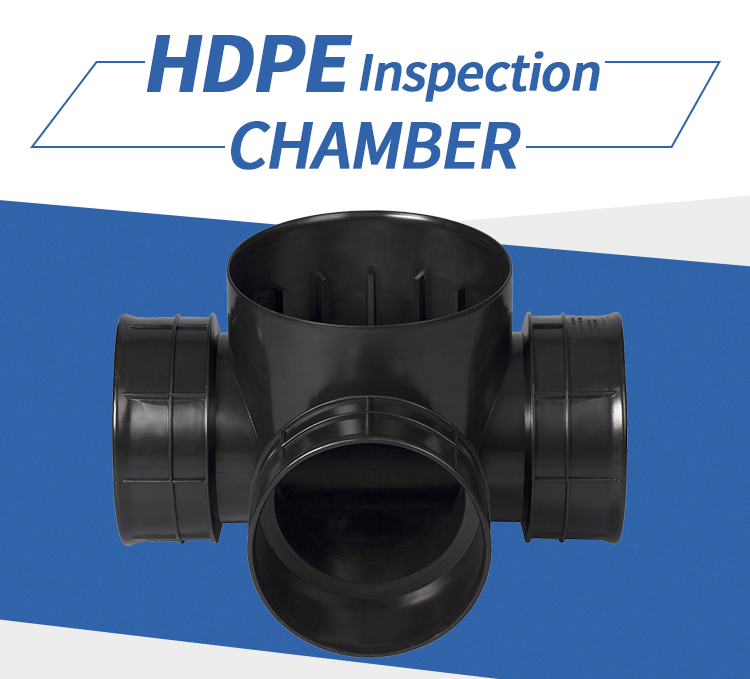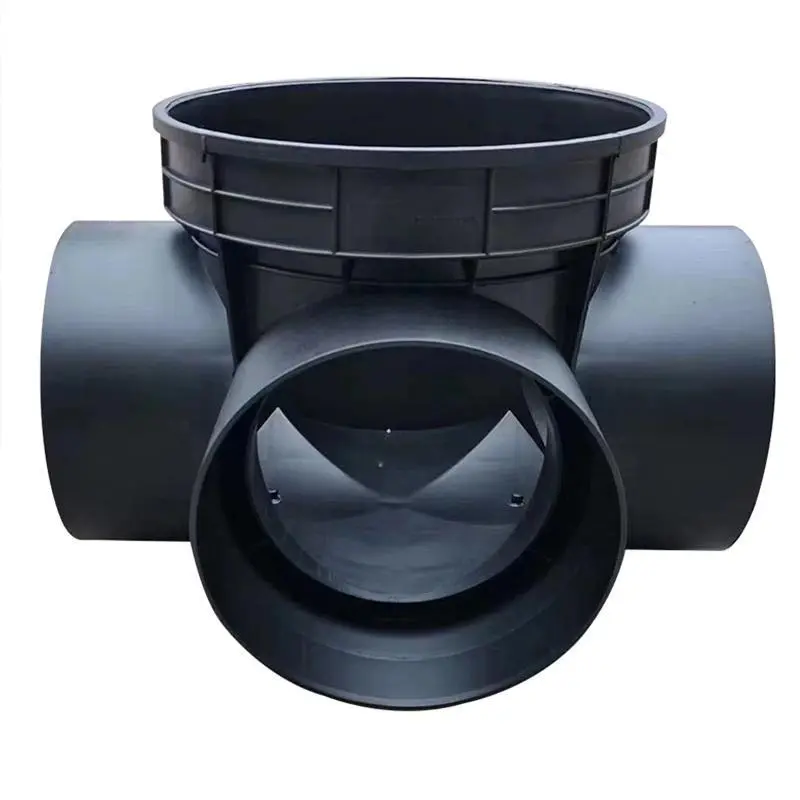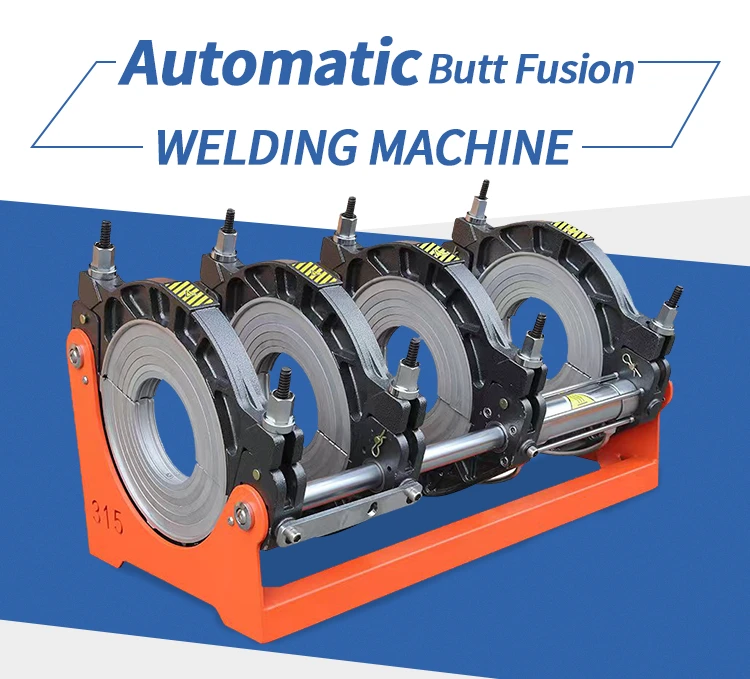PE inspection chamber installation with plastic pipe
1. The installation sequence of the connection between the manhole well seat and the pipeline of the inspection manhole well should start from the upstream section of the household pipe, install in the order of manhole well-pipe-manhole well-pipe, and gradually extend to the downstream branch pipe and main pipe.
2. The construction method of manhole well seat joint and pipeline connection should be consistent with the construction method of pipeline connection of the same type of joint.
3. The connection between the manhole well base and the inlet pipe and the discharge pipe needs to be reduced in diameter. When using different diameter joints, when the diameter of the inlet pipe is smaller than the diameter of the manhole well base interface, the top of the pipe should be connected flat; when the manhole well base discharge pipe interface is larger than the downstream pipe , the inner bottom of the tube should be flushed.
4. When the pipeline adopts variable angle joints or spherical joints to adjust the slope, when its diameter is 315mm, special tools should be used instead of chain wrenches.
5. The installation of the additional joints should be based on the size of the wellbore and the diameter of the connecting pipes, and special tools should be used to open holes on the wall of the manhole well.
6. When the groundwater level is high or during construction in rainy season, when the installation of the pipeline (including the inspection manhole well) is completed (but the irrigation test has not been carried out), technical measures to prevent the manhole well body from floating should be taken.
PE inspection chamber installation socket fusion
1. The length of the wellbore shall be the height from the bottom of the socket connecting the wellbore to the design ground, minus the net distance from the top of the wellbore to the ground. When it is difficult to accurately determine the ground or road elevation, the length of the wellbore can be properly reserved.
2. The wellbore inserted into the manhole well seat should be kept vertical. When the wellbore is plugged, it is not allowed to use a heavy hammer, and a special tightening tool should be used.

PE inspection chamber backfill
1. Backfilling should be carried out after the drainage pipeline (including pipelines and inspection manhole wells) has passed the acceptance inspection, and it should be carried out at the same time as the backfilling of the pipeline trenches.
2. Before backfilling, sand bags, steel drills and wooden supports can be used to fix the manhole well seat and wellbore, and the accumulation of water in the foundation pit and trench should be excluded.
3. Backfill material: from the base surface of the bottom of the pipe to the trench within 0.5m above the top of the pipe, the backfill materials can be crushed stone chips, sand with a particle size of less than 40mm, high (medium) calcium fly ash, medium-coarse sand or trenches Good quality soil excavated.
4. The backfill shall not use silt, garbage and frozen soil, and shall not entrain stones, bricks and other hard objects with edges and corners.
5. When the local maximum frozen soil depth is greater than or equal to 1.0m, within the range of the frozen layer, medium-coarse sand should be backfilled within a range of no less than 100m around the wellbore.
6. Backfilling should be artificially layered and symmetrical, and its compactness should be consistent with that of pipeline backfilling, and the wellbore should not be displaced and tilted, and mechanical backfilling is strictly prohibited.
PE inspection chamber backfill details
1. For backfill, generally do not mix stones and other hard objects with edges and corners;
2. Layered and symmetrical backfilling should be carried out to prevent displacement and inclination of the wellbore;
3. When performing layered backfilling, it should be noted that the thickness of each layer of virtual backfill should not be greater than 300mm
4. Backfilling should be done manually, not by machinery; click me to read: the latest practical series of high-quality materials for engineering.
5. Each layer of backfill shall be compacted symmetrically with light compaction tools such as wood compaction, and its compactness is consistent with that of pipeline backfill;
6. Backfilling should be carried out after the acceptance of the drainage pipeline; Biaolong laser marking machine
7. Before backfilling, the accumulated water in the foundation pit and trench should be excluded;
8. When the plastic inspection manhole well on the road is backfilled to the upper part of the wellbore, the size of the foundation pit of the manhole cover should be reserved around the wellbore according to the soil quality of the backfill and the characteristic value of the bearing capacity of the backfill foundation;
9. The backfilling of plastic inspection manhole wells should be carried out at the same time as the backfilling of pipeline trenches;
10. Backfill shall not use silt, garbage and frozen soil;
11. Before backfilling, use sand bag, steel drill and wooden support to fix the manhole well seat and wellbore
PE inspection chamber manhole well cover installation
1. Before installing the manhole cover, the length of the wellbore should be accurately measured, and the excess part of the wellbore should be cut.
2. The installation of the manhole cover should be determined according to the nature of the conveying medium of the inspection manhole well, and the sewage manhole cover and the rainwater manhole cover should not be confused.
3. The upper opening of the wellbore of the sewage inspection manhole well with a protective cover seat should also be installed with an inner cover.
4. C20 fine stone concrete is used for on-site pouring and tamping; if reinforced concrete is required, it needs to be designed separately by the structural professional.
PE inspection chamber closed water test
The closed water test shall be carried out in accordance with the current engineering technical regulations for buried plastic drainage pipelines.
How is the quality of the HDPE plastic inspection manhole well, can it withstand the pressure of walking a car?
The inspection manhole well technology of HDPE is very mature. After so many years of use and verification, the material can completely replace the traditional brick manhole well. Whether in terms of efficiency, pressure, shock resistance, and heat resistance, HDPE plastic inspection manhole wells are comprehensively leading. The traditional inspection manhole wells are made of brick and concrete, which is time-consuming and labor-intensive, and the efficiency is particularly low. If used for a long time, the rainwater and sewage will invade the manhole well wall, causing collapse or reducing the compressive capacity. HDPE inspection manhole wells are easy to use, high in construction efficiency, corrosion-resistant and anti-aging, and have a long service life. They can be used for 20 years without replacement, and the pressure resistance is more than 15T. Moreover, due to the flexibility of the material, HDPE inspection manhole wells have a seismic capacity that brick manhole wells do not have.






536.webp)
504.webp)
832.webp)



294.webp)
476.webp)
420.webp)
146.webp)


